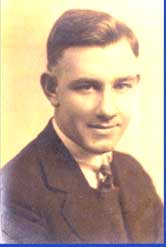
| Homepage |
| Early Life |
| Building a Family |
| A Special Home |
| Shipbuilding Career |
| The "Mount" |
| Memories |
| Flash Movie |
| Contact |
| Credits |
| Photo Album |

The Boston Floating Hospital becomes As recalled by Byron Hedblom " Late in the year, December of 1932, a gentleman came into the shop and asked for me. He said he had a job that he thought we might be interested in. He said a friend had said to him, see the Hedbloms, if anybody can do it, they can. He said that his name was Marshall B. Hall and that it was D.K. Ludwig who had sent him over.
I couldn’t help thinking, "Thank you Lord," that this had happened when it was laid up for the winter with no children aboard. He took me over to Boston to see the hull. I looked at the hull and it sure looked like a real project! Over the weekend I had thought about the Boston Floating Hospital hull. I thought about a scheme whereby we could eliminate most of the tanks from the outside hull and also make it a pretty good-looking vessel. We had to consider the Coast Guard and Maritime Commission requirements for carrying oil, also considering insurance for ship and cargo. This tanker would require building two longitudinal bulkheads for the full length, about 30 feet apart, with six transverse bulkheads making an engine room with two tanks forward and two tanks aft. These bulkheads would be about five-feet above the old deck for extra cargo space. A new deck over the entire length of the boat. A deck house to accommodate the crew and needed facilities, also a pilothouse. It would also require all seams and rivets to be welded in the oil tanks. The seams in the bottom would have to be welded in dry dock. The ship would also need the following equipment: two diesel engines, electrical generators, pumps, cargo pumps, fire equipment and other safety equipment. The two propeller shafts seemed OK but required a tunnel of some sort to enclose them where they went through the oil tanks. It was quite a job, but a good job for us. I told all this to Mr. Hall the next week, and he seemed very pleased with what I told him. He also thought that it would look OK. He said OK; I will tow the hull over to the yard to get it away from Boston. It was a crazy job, but it could be made a good and serviceable vessel. It was a good job. He also said if we had any problems obtaining materials for any job to let him know, give him the amount and he could finance them for us, to be accounted for later. " |